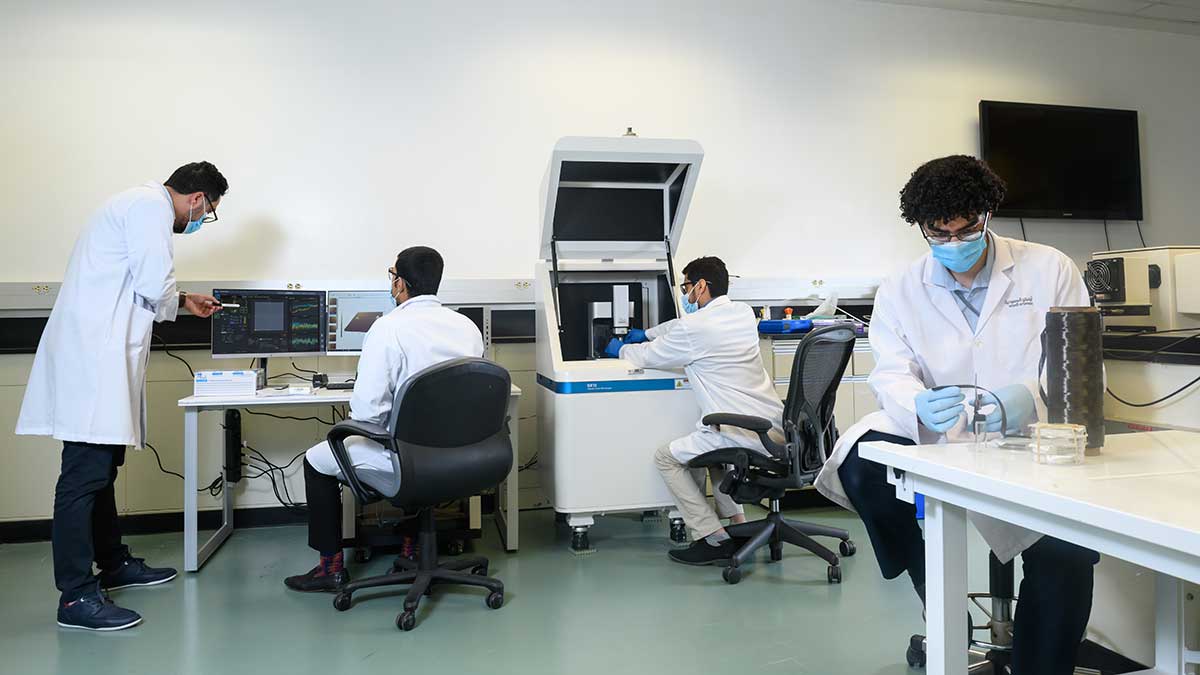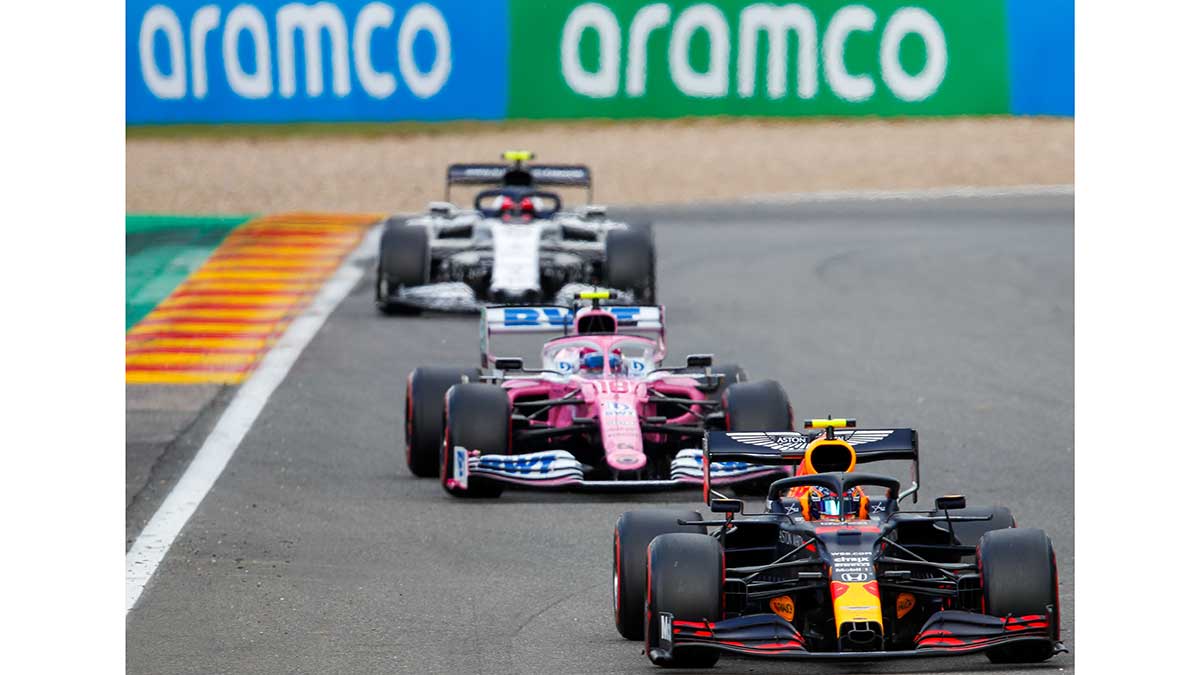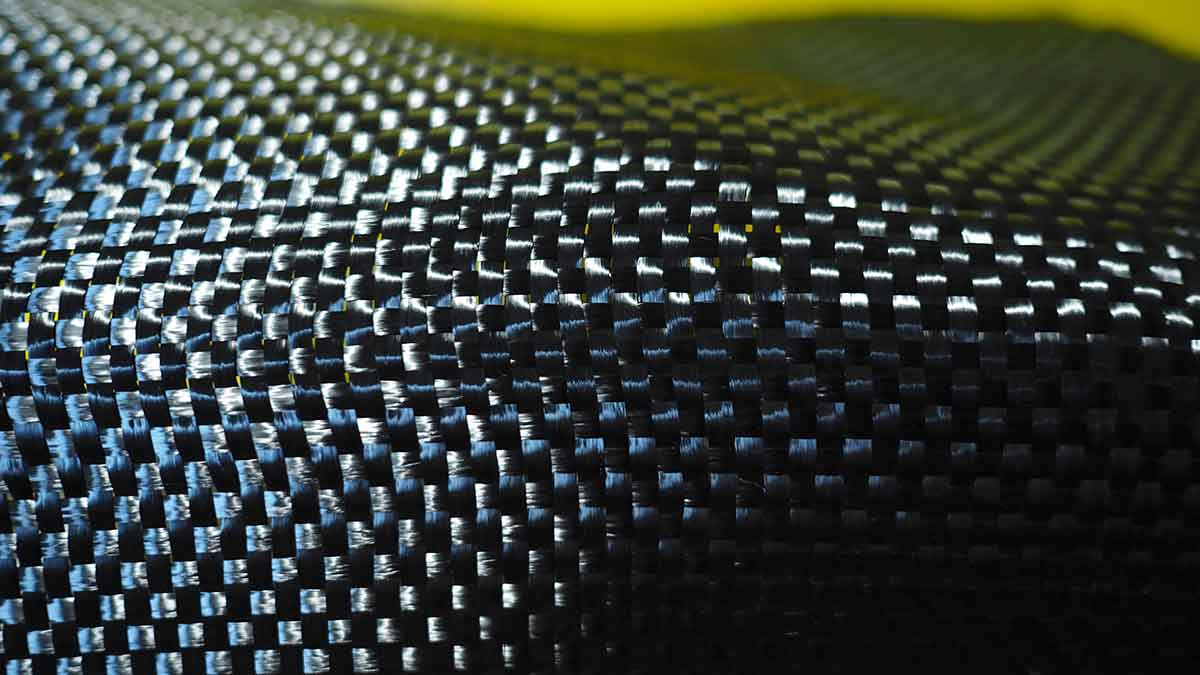Speed of Technology
Thinner than hair, stronger than steel

Global February 09, 2021 - By
Aramco races to make carbon fiber more affordable.
Anyone willing to spend thousands of dollars on a top-of-the-line carbon fiber bicycle will understand the benefits the material offers. A bike frame constructed from carbon fiber will make it much stronger, lighter, and more durable than a traditional steel-framed bike.
Carbon fiber is a reinforcing material, capable of handling heavy loads and stress under extreme conditions. Nonmetallic “composite” materials, made by combining carbon fiber and polymers, are about 40% lighter than aluminum, and can be 10 times stronger than steel. They are also resistant to chemicals and high temperatures. These properties make carbon fiber an ideal, though expensive, material for consumer and industrial applications.
In the oil and gas industry, nonmetallics such as plastics are already being used for various applications, including pipelines, for their improved performance and lower maintenance costs. In the future, carbon fiber reinforced plastics (CFRPs), could be used, for example, to manufacture large diameter pipelines with greater strength and operating efficiency than legacy steel-based pipelines.

In the field of motorsport, Formula 1 (F1) teams have long pioneered the use of carbon fiber. The McLaren F1 team introduced its carbon fiber-based “monocoque” racing car in 1981. This revolutionary design used a carbon fiber “safety cell” for a stronger, lighter racing car with better performance and protection for drivers. Today, F1 teams use CFRPs for key components in their cars, including the chassis, wings, nose, and suspension, making the vehicles safer, lighter, and more fuel efficient.
Saudi Aramco Technologies Company (SATC) in Dhahran is developing new technologies that will help expand production of cost-effective carbon fiber for new applications. This effort is in line with Aramco’s corporate drive to increase its nonmetallic materials business by targeting opportunities in different industrial sectors.
Lowering the cost of carbon fiber and creating new demand for polymers
Although demand for carbon fiber is rising exponentially, the automotive industry has been slow to adopt it for use in mass market road cars because of high costs — 2020 prices for CFRPs were about 10 times more than those for steel. Use of carbon fiber has largely been restricted to luxury cars and motorsports. But wider use of carbon fiber “lightweighting” will result in vehicles that consume less fuel and have lower emissions.

Making CFRPs more affordable presents an opportunity for Aramco to become a major disruptive force, enabling the company to create new markets for the competitive chemicals it produces. To achieve this goal, Aramco is building a global collaboration ecosystem to support development of new polymers and other nonmetallics.
SATC is collaborating with the Institute of Textile Technology in Germany to find ways of bringing to market cost-effective standard strength carbon fiber and increasing demand for polymer-based technologies for mass market applications.
Mohamed Bouhrara, a senior research scientist with the Manufacturing Processes team at the Research and Development Center, says the goal is to “lower the cost of manufacturing carbon fiber to $10 per kilogram by 2035.” This is an almost 50% reduction over 2020 prices.
(This initiative) will accelerate the mass adoption of carbon fiber.
— Mohamed Bouhrara
New technology will accelerate use of CFRPs
Aramco is also collaborating with Total and INEOS, a chemicals company, in the Amiral project bringing acrylonitrile (ACN) production to the Kingdom. ACN is an essential building block for many plastics, including polyacrylonitrile (PAN), which is the most commonly used raw material for carbon fiber. The Amiral project will supply propylene to a new plant being built by INEOS in Jubail, on the Arabian Gulf. INEOS’ ACN products will enable production of PAN at lower cost, which will in turn lower the cost of carbon fiber.
Other carbon technology
Aramco is looking at using polyethylene (PE) as an alternative precursor for manufacturing carbon fiber. In fact, PE has several advantages over PAN, including a higher carbon content, lower costs, and better processability. Researchers are working to overcome the technical challenges related to the use of PE-based technology. According to Bouhrara, these include the “ability to upscale the PE-based process and match the mechanical properties of PAN-based carbon fiber.”
These technologies will enable Aramco to achieve an early advantage through a two-pronged approach to expanding markets for carbon fiber — optimizing current manufacturing processes and introducing new technology for improved quality and cost-efficiency.
In tandem with advanced fuels and engines — being developed across Aramco’s global research network — meeting demand for carbon fiber will help drive sustainability, diversify uses for crude oil resources, push technical innovation, and enable new economic opportunities.



